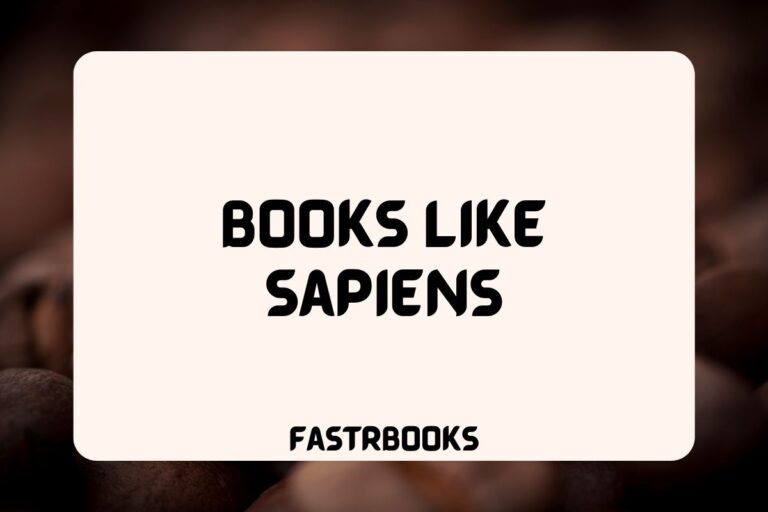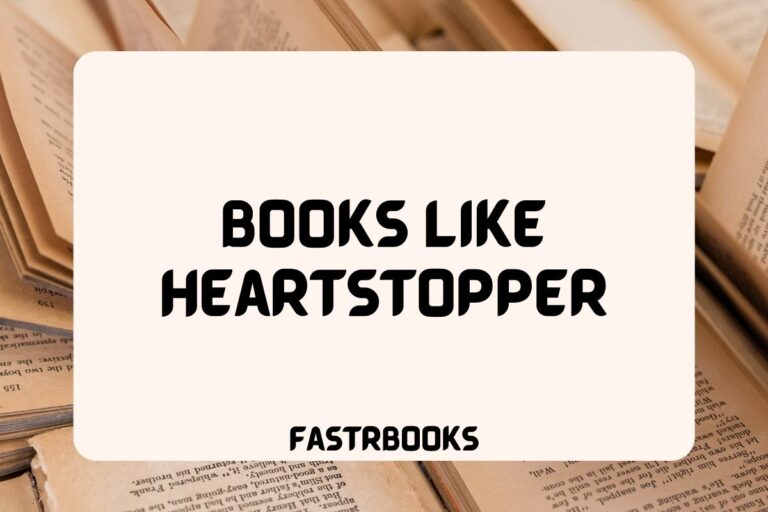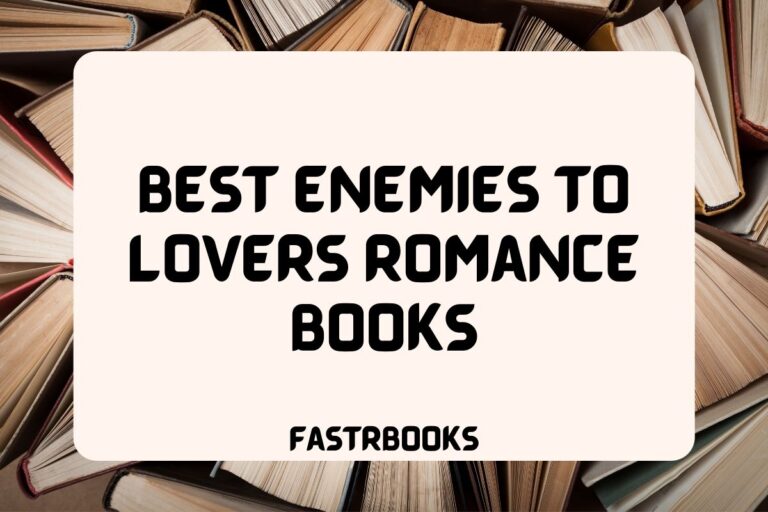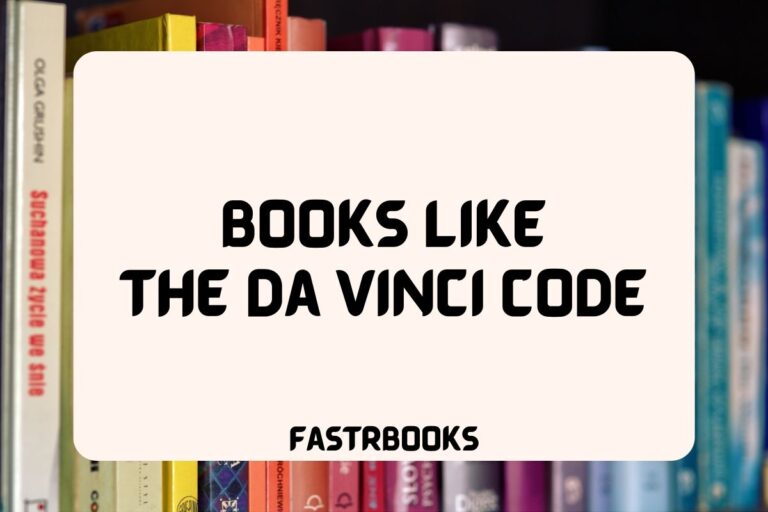18 Books Like The Great Gatsby
Are you searching for captivating tales of opulence, romance, and the complexities of the human experience akin to F. Scott Fitzgerald’s timeless classic, ‘The Great Gatsby’?
Look no further!
Delve into this curated list of books that echo the glamour, intrigue, and poignant themes that made Gatsby an enduring literary masterpiece.
Books Like The Great Gatsby
1. The Sun Also Rises by Ernest Hemingway
“The Sun Also Rises” is a seminal work that captures the disillusionment and existential search for meaning among the expatriate community of post-World War I Europe. Hemingway’s terse prose and the iceberg theory of omission vividly convey the lives of the “Lost Generation,” focusing on the impotent war veteran Jake Barnes and his unrequited love for Lady Brett Ashley.
Set against the backdrop of the running of the bulls in Pamplona, Spain, the novel explores themes of masculinity, love, and the aimlessness of the post-war generation.
Major Similarities:
Similar to “The Great Gatsby,” “The Sun Also Rises” deals with themes of disillusionment and the quest for meaning in a world that has been irrevocably changed by war. Both novels are deeply concerned with the moral decay of society and the impact of wealth and aimlessness on the characters’ lives.
Hemingway and Fitzgerald both use their narratives to critique the hedonistic lifestyle of their contemporaries, making their works poignant explorations of the human condition in the aftermath of catastrophe.
2. This Side of Paradise by F. Scott Fitzgerald
“This Side of Paradise” is F. Scott Fitzgerald’s debut novel that immediately established him as a leading voice of his generation. The novel is a coming-of-age story that follows the life of Amory Blaine, an ambitious young man who grows up in the post-World War I era, grappling with love, greed, and the search for purpose.
Fitzgerald’s elegant prose and keen social observations dissect the disillusionment of the youth in the 1920s, as they struggle to reconcile their lofty aspirations with the harsh realities of an indifferent world.
Major Similarities:
Like “The Great Gatsby,” “This Side of Paradise” examines the themes of ambition, social status, and the disillusionment that comes with the American Dream. Both novels critique the moral vacuity of high society and the pursuit of wealth as a path to happiness.
Fitzgerald’s adept exploration of young adulthood and the transformative effects of societal expectations echoes through both works, offering a critical look at the American ethos in the early 20th century.
3. The Beautiful and Damned by F. Scott Fitzgerald
“The Beautiful and Damned” chronicles the life and marriage of Anthony Patch, a presumptive heir to a fortune, and his wife Gloria, as they navigate through the highs and lows of their glamorous, yet ultimately destructive lifestyle during the Jazz Age.
Fitzgerald delves into the themes of ambition, beauty, and the corrosive effects of wealth and leisure on their relationship and personal ambitions. The novel serves as a cautionary tale of the decadence of the elite and the existential ennui that afflicts those who have no greater aspirations than the pursuit of pleasure.
Major Similarities:
Both “The Beautiful and Damned” and “The Great Gatsby” offer a critical view of the American Dream, portraying it as ultimately unattainable and destructive. Fitzgerald’s portrayal of flawed characters who are obsessed with their own youth and beauty reflects a society that is consumed by appearances and status.
The novels share a deep preoccupation with the themes of love, betrayal, and the pursuit of happiness in a world where values are often misplaced.
4. A Farewell to Arms by Ernest Hemingway
“A Farewell to Arms” is set against the backdrop of World War I, focusing on the romance between Frederic Henry, an American ambulance driver in the Italian army, and Catherine Barkley, a British nurse.
It’s a profound exploration of love, war, and the tragedy that comes from their intersection. Hemingway’s stark, unadorned prose captures the despair of the war and the fleeting nature of human connections. The novel is as much a critique of the romantic notions of war as it is a poignant love story, reflecting Hemingway’s own experiences as an ambulance driver during the war.
Major Similarities:
Like “The Great Gatsby,” “A Farewell to Arms” explores the themes of disillusionment and the pursuit of meaning in a tumultuous world. Both novels are deeply concerned with the aftermath of war and its impact on individuals seeking purpose and connection in a changed society.
Hemingway and Fitzgerald address the loss of innocence and the quest for identity in a world where old values no longer seem to apply, making both novels enduring portraits of their time.
5. Tender is the Night by F. Scott Fitzgerald
“Tender is the Night” tells the story of Dick Diver, a promising young psychiatrist, and his wife Nicole, who struggles with mental illness. Set in the French Riviera in the 1920s, the novel explores the complexities of love, the burdens of care, and the impact of fame and wealth on personal relationships.
Fitzgerald’s narrative delves into the disintegration of the Divers’ marriage and Dick’s eventual decline, offering a somber look at the fragility of human psyche and the destructive nature of societal expectations.
Major Similarities:
“Tender is the Night” and “The Great Gatsby” share Fitzgerald’s fascination with the dynamics of wealth, love, and the disillusionment that often accompanies them. Both novels scrutinize the allure and pitfalls of the American Dream, the obsession with youth and beauty, and the moral decay of society.
Fitzgerald’s intricate character studies and his portrayal of the Jazz Age as both dazzling and decadent resonate strongly in both works, cementing his legacy as a critical observer of American culture.
6. The Age of Innocence by Edith Wharton
“The Age of Innocence” offers a meticulous examination of New York City’s upper class during the Gilded Age, presenting a society that is as entangled in its own web of customs and traditions as it is opulent.
Through the lens of Newland Archer, who is caught between his duty to his fiancée May Welland and his passion for the scandalous Countess Ellen Olenska, Wharton critiques the rigid social norms that dictate behavior and limit individual freedom.
The novel is celebrated for its intricate character development, rich historical detail, and its exploration of the conflict between societal expectations and personal desires.
Major Similarities:
Like “The Great Gatsby,” “The Age of Innocence” scrutinizes the intricacies of high society, albeit in a different era, and the illusion of the American Dream.
Both novels delve into themes of love, desire, and the sacrifices made for social standing. Wharton and Fitzgerald use their narratives to reveal the moral bankruptcy of a society obsessed with appearances and tradition, showcasing the profound effects of social constraints on personal happiness.
7. Brideshead Revisited by Evelyn Waugh
“Brideshead Revisited” recounts the story of Charles Ryder and his involvement with the aristocratic Flyte family between the World Wars. Through Charles’s eyes, the reader experiences the allure and eventual decline of the British aristocracy, as well as themes of nostalgia, Catholic faith, and the search for meaning in a changing world.
Waugh’s evocative prose and vivid descriptions of Brideshead, the Flyte family estate, imbue the novel with a sense of longing for a bygone era, making it a poignant exploration of memory and loss.
Major Similarities:
Similar to “The Great Gatsby,” “Brideshead Revisited” deals with the themes of nostalgia and the corrupting influence of wealth. Both novels reflect on the passage of time and the inevitable decay of old values and lifestyles in the face of modernity.
Fitzgerald and Waugh both present a critical view of their characters’ attempts to capture an idealized past or attain a sense of belonging in a world that is rapidly changing around them.
8. The Catcher in the Rye by J.D. Salinger
“The Catcher in the Rye” captures the voice of Holden Caulfield, a disaffected teenager navigating the challenges of adolescence in post-World War II America. Holden’s journey through New York City and his criticisms of the “phoniness” of the adult world offer a raw and compelling exploration of teenage angst, alienation, and the desire for authenticity.
Salinger’s novel is renowned for its conversational style, deep psychological insight, and its enduring impact on American literature and culture.
Major Similarities:
Both “The Great Gatsby” and “The Catcher in the Rye” explore themes of disillusionment and the critique of American society, albeit from different generational perspectives.
While Gatsby deals with the adult world’s corruption and the pursuit of the American Dream, Salinger’s work focuses on the struggles of youth and the search for identity in a post-war society.
Both authors masterfully depict their characters’ internal conflicts and the societal pressures that drive them towards their respective fates.
9. Z: A Novel of Zelda Fitzgerald by Therese Anne Fowler
“Z: A Novel of Zelda Fitzgerald” is a fictionalized account of Zelda Fitzgerald’s life, offering an intimate glimpse into the tumultuous relationship between Zelda and F. Scott Fitzgerald. Set against the backdrop of the Jazz Age, the novel explores Zelda’s role as a muse, her ambitions as an artist in her own right, and her struggles with mental illness.
Fowler brings to life the glamour and excess of the era, while also highlighting the personal cost of living in the shadow of one of America’s most celebrated literary figures.
Major Similarities:
Similar to “The Great Gatsby,” “Z: A Novel of Zelda Fitzgerald” delves into the allure and decadence of the Jazz Age, focusing on the complex dynamics of love and creativity. Both novels provide a critique of the era’s excesses and the impact of fame and societal expectations on personal relationships.
Through the lens of Zelda’s life, Fowler explores themes of identity, artistic expression, and the destructive nature of the American Dream, echoing Fitzgerald’s own exploration of these themes in his work.
10. The Paris Wife by Paula McLain
“The Paris Wife” narrates the story of Hadley Richardson, the first wife of Ernest Hemingway, and their life together during the 1920s in Paris among the Lost Generation of expatriate writers and artists. Through Hadley’s perspective, the novel explores the complexities of their marriage, Hemingway’s rise to fame, and the challenges of living in the shadow of a burgeoning literary genius.
McLain captures the vibrant atmosphere of Paris during the Jazz Age, along with the personal and artistic struggles that defined the lives of many of the era’s most famous figures.
Major Similarities:
Like “The Great Gatsby,” “The Paris Wife” is set in the same historical period and delves into the themes of love, ambition, and the pursuit of artistic success. Both novels are deeply concerned with the impact of societal pressures and the quest for identity within the context of marriage and professional life.
McLain, like Fitzgerald, offers a critique of the Jazz Age’s glamour, highlighting the personal costs and moral compromises of those who sought to define the era.
11. Mrs. Dalloway by Virginia Woolf
“Mrs. Dalloway” is a landmark novel by Virginia Woolf that encapsulates a day in the life of Clarissa Dalloway, a high-society woman in London, as she prepares to host a party. Woolf uses a stream-of-consciousness technique to delve deep into Clarissa’s thoughts and memories, exploring themes of existentialism, mental health, and the aftermath of World War I.
The novel is a poignant commentary on the interconnectedness of people and the unseen complexities of everyday life, showcasing Woolf’s innovative narrative style and her ability to capture the fleeting moments of existence.
Major Similarities:
Similar to “The Great Gatsby,” “Mrs. Dalloway” explores the intricate layers of high society and the individual’s search for meaning within it. Both novels are set in the aftermath of World War I and address the psychological impact of the war on their characters.
Woolf and Fitzgerald use their narratives to critique the superficiality of social conventions and the deep undercurrents of longing and despair that lie beneath the surface of their characters’ lives.
12. The Harlem Renaissance by Various Authors
“The Harlem Renaissance” refers to a collection of works produced by African American authors, poets, and artists during the 1920s and early 1930s, centered in the Harlem neighborhood of New York City.
This cultural movement sought to express the African American experience and fight against racial discrimination through art, literature, and music.
Key figures include Langston Hughes, Zora Neale Hurston, Claude McKay, and Jean Toomer, among others. Their works explore themes of racial pride, cultural identity, and the struggle for civil rights, contributing significantly to American literature and arts.
Major Similarities:
While “The Great Gatsby” focuses on the white upper class of the Jazz Age, the works of the Harlem Renaissance explore the lives and struggles of African Americans during the same period. Both Fitzgerald’s novel and the Harlem Renaissance literature capture the spirit of the 1920s, albeit from vastly different perspectives.
They share a common backdrop of exploring identity, the impact of societal change, and the American Dream’s complexity, highlighting the era’s vibrancy and the stark inequalities that coexisted.
13. Jazz by Toni Morrison
“Jazz” is a novel by Toni Morrison set in Harlem during the 1920s, a time of great cultural upheaval and creativity. The story revolves around a love triangle between Joe Trace, his wife Violet, and a young girl named Dorcas, whom Joe murders in a fit of passion.
Morrison uses this narrative to explore themes of love, jealousy, and the search for identity against the backdrop of the Jazz Age. The novel is celebrated for its lyrical prose, non-linear narrative structure, and its deep exploration of African American life and culture during this vibrant historical period.
Major Similarities:
Both “Jazz” and “The Great Gatsby” delve into the complexities of love and desire, set against the backdrop of the 1920s. While Morrison focuses on African American characters in Harlem, Fitzgerald explores the lives of the white elite on Long Island.
Despite these differences, both novels capture the essence of the Jazz Age—its music, its excesses, and its impact on the American psyche. Morrison and Fitzgerald offer critical reflections on their respective societies, exploring the depths of human emotions and the consequences of pursuing one’s desires.
14. Vile Bodies by Evelyn Waugh
“Vile Bodies” is a satirical novel by Evelyn Waugh that critiques the young generation of the 1920s, known as the “Bright Young Things” of London society.
Through the experiences of its protagonist, Adam Fenwick-Symes, and his circle of friends, the novel explores the aimlessness, hedonism, and moral vacuity of this post-war generation.
Waugh’s sharp wit and satirical eye expose the frivolity and despair of a society caught between the traumas of World War I and the looming shadow of World War II, offering a comedic yet poignant commentary on the era’s social mores.
Major Similarities:
Like “The Great Gatsby,” “Vile Bodies” provides a critical examination of the Jazz Age’s excesses and the superficiality of the social elite.
Both novels portray a society obsessed with wealth, status, and entertainment, highlighting the emptiness that often lies beneath the glamorous surface.
Fitzgerald and Waugh use their narratives to question the values of their characters and the societies they inhabit, revealing the disillusionment and moral decline of the post-war generation.
15. The Lost Weekend by Charles Jackson
“The Lost Weekend” by Charles Jackson is a groundbreaking novel that provides an unflinching portrayal of alcoholism and its devastating effects. The story follows Don Birnam, a would-be writer in New York City, as he embarks on a five-day drinking binge.
Jackson’s vivid and harrowing depiction of addiction, denial, and despair offers a deep psychological exploration of a man battling his demons. The novel is notable for its honest portrayal of addiction, bringing attention to the struggles of alcoholics and the impact of society’s attitudes toward them.
Major Similarities:
While “The Great Gatsby” and “The Lost Weekend” are set in different decades and focus on distinct themes, both novels offer critiques of American society through their portrayal of characters who seek to escape reality.
Gatsby’s lavish parties and the opulent lifestyle of the 1920s serve as a backdrop for exploring the American Dream’s illusions, similar to how Jackson explores the depths of addiction against the backdrop of 1930s New York.
Both novels delve into the human condition, examining the ways individuals cope with their disillusionments and desires in a rapidly changing world.
16. Gentlemen Prefer Blondes by Anita Loos
“Gentlemen Prefer Blondes” is a comedic novel by Anita Loos that follows the adventures of Lorelei Lee, a cunning and charismatic flapper, as she navigates the social ladder seeking wealth and status.
Told through Lorelei’s diary entries, the novel satirizes the absurdities of the upper class and the societal expectations placed on women during the 1920s.
Lorelei’s witty observations and manipulative antics offer a humorous critique of the era’s obsession with money, beauty, and social standing, making it a beloved satire of Jazz Age America.
Major Similarities:
Similar to “The Great Gatsby,” “Gentlemen Prefer Blondes” explores the themes of wealth, social climbing, and the American Dream through the lens of the 1920s.
While Fitzgerald offers a more somber critique of these themes, Loos approaches them with humor and satire, showcasing the era’s frivolity and the lengths to which people will go for fame and fortune.
Both novels provide insightful commentary on the values of their time, using their characters’ ambitions and relationships to reveal the superficial nature of society’s elite.
17. Death Comes for the Archbishop by Willa Cather
“Death Comes for the Archbishop” by Willa Cather is a novel that transcends the specific historical and cultural context of the American Southwest in the 19th century to explore universal themes of faith, duty, and the search for meaning.
Through the lives of Bishop Jean Marie Latour and his friend Father Joseph Vaillant, Cather weaves a narrative that is as much about the landscape and the shaping of the American frontier as it is about the interior lives of her characters.
The novel’s elegant prose and contemplative tone highlight the spiritual and physical journeys of its protagonists, offering a profound meditation on the human condition.
Major Similarities:
Although “Death Comes for the Archbishop” does not share the Jazz Age setting of “The Great Gatsby,” both novels delve into the exploration of the American experience and the quest for identity within it.
Cather and Fitzgerald both depict the transformation of the American landscape—literally in Cather’s case and socially in Fitzgerald’s—and examine the impacts of these changes on their characters.
Their works contemplate the ideals and realities of the American Dream, though from markedly different perspectives and eras.
18. The Razor’s Edge by W. Somerset Maugham
“The Razor’s Edge” by W. Somerset Maugham follows the spiritual journey of Larry Darrell, a disillusioned World War I veteran who rejects conventional society in search of deeper meaning and enlightenment.
Set against the backdrop of post-war Europe and America, the novel contrasts Larry’s quest with the lives of his more materialistic friends and former fiancée, highlighting the tension between spiritual fulfillment and societal expectations.
Maugham’s narrative is a rich exploration of the themes of existential search, the critique of materialism, and the pursuit of a life beyond the confines of social norms.
Major Similarities:
Both “The Razor’s Edge” and “The Great Gatsby” grapple with the aftermath of World War I and its psychological impact on individuals.
While “The Great Gatsby” focuses on the disillusionment with the American Dream and the moral decay of society, “The Razor’s Edge” centers on the personal quest for meaning in a world that seems spiritually empty.
Both novels feature characters who are at odds with the prevailing values of their time, searching for authenticity and purpose in a rapidly changing world.






